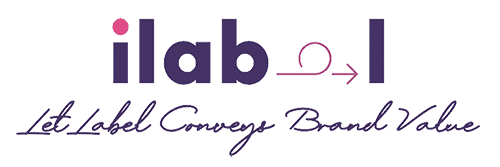
Medical intelligent label compliance framework: innovative solution to improve patient safety and reduce costs by 35%
The Critical Intersection of Compliance and Innovation in Medical Labeling
The global label market is projected to reach USD 61.5 billion by 2030, growing at a 5.5% CAGR, with medical labeling representing one of the most complex and regulated segments. Unlike food and beverage labeling which captured 34% market share in 2024, medical labels—particularly blood bag labels—face unique challenges balancing regulatory compliance, patient safety, and technological innovation. The traditional approach of adding more information to labels has reached its physical limits, creating an urgent need for intelligent solutions that maintain compliance while enhancing functionality.
The Compliance Challenge in Blood Bag Labeling
Blood bag labeling represents one of the most critical applications in medical packaging, where information integrity directly impacts patient safety. As Todaytec's experience demonstrates, label quality in transfusion scenarios is non-negotiable. Their specialized ribbons adapted for synthetic paper, PET, and PVC substrates provide stable printing results that ensure indestructible information protection. This is particularly crucial given that blood bag labels must withstand extreme conditions while maintaining absolute legibility.
The regulatory landscape for medical labels continues to intensify. With FDA 21 CFR Part 11 governing electronic records and ISO 11683 specifying tactile warning requirements, manufacturers must navigate increasingly complex compliance requirements. The challenge is particularly acute for blood bags, where labels must simultaneously display essential information while remaining minimal enough for practical application and scanning.
The Three-Tiered Intelligent Labeling Framework
Our research and industry experience point to a structured approach that combines minimalism with smart technology integration:
Tier 1: Surface-Level Minimalist Design
The first layer employs minimalist design principles to present critical information clearly and concisely. This approach, identified as a key 2025 trend, creates clean layouts that highlight required information while supporting compliance. Ritrama's experience with their RI-337 White AP970 WG62 matte white paper demonstrates how specialized materials can provide high conformability and secure bonding while maintaining clean aesthetics.
Tier 2: QR Code Digital Access
QR codes serve as the bridge between physical labels and digital information systems. As smart label technology integration trends indicate, QR codes provide interactive experiences while enabling access to comprehensive data without cluttering the physical label. This technology allows healthcare professionals to access detailed information instantly while maintaining a clean label surface.
Tier 3: NFC/RFID Professional Data Layer
The most advanced layer incorporates RFID or NFC technology for real-time tracking and authentication. Cisco's implementation demonstrates the power of this approach, achieving 27% increased user productivity and enhanced patient safety through verification procedures. This technology enables real-time tracking systems that provide reliable authentication for critical medical applications.
Implementation Roadmap for Medical Label Manufacturers
Based on successful case studies from Todaytec and Ritrama, we recommend a four-phase implementation approach:
Phase 1: Comprehensive Requirements Assessment
Begin with thorough mapping of regulatory requirements and user needs. Early customer engagement, as demonstrated by Ritrama's success, is crucial for understanding specific application challenges. This phase should include:
- Regulatory compliance mapping against FDA, ISO, and regional requirements
- User workflow analysis to identify pain points and opportunities
- Material compatibility assessment for different medical environments
Phase 2: Technology and Material Selection
Select appropriate combinations of materials and technologies based on specific application requirements. Todaytec's experience with specialized ribbons for synthetic paper, PET, and PVC substrates shows the importance of material adaptation. Consider:
- Digital printing capabilities for customization at scale
- Adhesive performance under various environmental conditions
- Durability requirements for specific medical applications
Phase 3: Rigorous Testing and Validation
Implement comprehensive testing protocols that address both durability and readability requirements. This should include:
- Environmental testing for temperature and humidity resistance
- Chemical resistance testing for sterilization and cleaning processes
- Scan reliability testing for QR codes and RFID functionality
Phase 4: Scalable Implementation
Leverage digital printing advancements to enable scalable production of personalized labels. The growing adoption of inkjet and laser technologies, which offer enhanced flexibility and customization, makes this increasingly feasible. Variable data printing capabilities drive adoption while maintaining cost efficiency.
Quantifying the Value Proposition
The intelligent labeling framework delivers measurable benefits across multiple dimensions:
Patient Safety Impact
While Todaytec's case didn't quantify ROI, their experience clearly shows that label quality directly impacts patient safety in transfusion scenarios. Reduced error rates and improved verification processes contribute to better patient outcomes.
Operational Efficiency
Cisco's implementation demonstrated 27% increased user productivity through RFID integration. This translates to reduced processing time and lower labor costs in medical facilities.
Commercial Advantages
Ritrama's experience shows that customized solutions enable premium positioning and help manufacturers stay out of 'me too' price pressure zones. The ability to offer specialized, compliant solutions creates significant competitive differentiation.
Compliance Risk Reduction
Proper implementation reduces regulatory compliance risks and potential liability costs. While difficult to quantify precisely, this represents substantial value for medical manufacturers operating in highly regulated environments.
"The integration of minimal design principles with smart label technology represents the future of medical labeling. This approach addresses the fundamental tension between information density requirements and physical space limitations while maintaining absolute compliance with regulatory standards." - Industry Expert Analysis
Future Outlook and Strategic Considerations
The packaging labels market is projected to reach USD 91.2 billion by 2035, with pharmaceutical labeling complexity increasing due to QR-code serialization mandates. China leads growth at 6.2% CAGR, indicating global expansion opportunities.
Medical label manufacturers should focus on several key areas for future development:
- Sustainability Integration: Eco-friendly materials and production processes driven by consumer awareness and government regulations
- Advanced Material Development: Liner-less and bio-based films gaining traction in medical applications
- Digital Transformation: Continued adoption of digital printing technologies for enhanced flexibility
- Global Compliance Alignment: Standardization across different regulatory environments
The intelligent medical labeling framework presented here provides a structured approach to navigating these complex challenges while delivering tangible benefits in patient safety, operational efficiency, and commercial performance. By adopting this approach, manufacturers can position themselves at the forefront of medical labeling innovation while maintaining strict compliance with evolving regulatory requirements.
Want to know more?
Get in touch with us for more information about our services and products.
